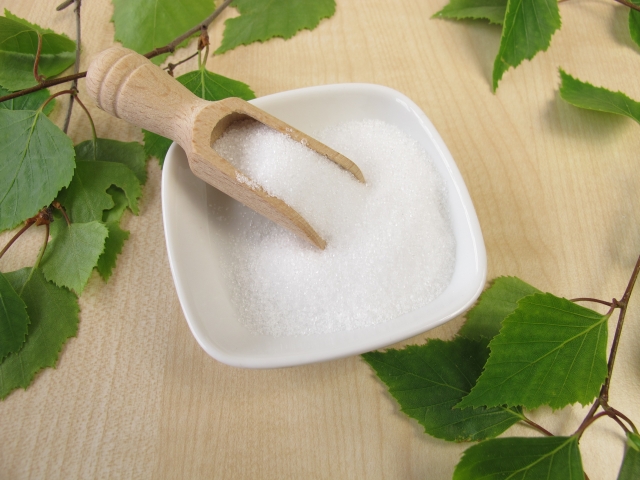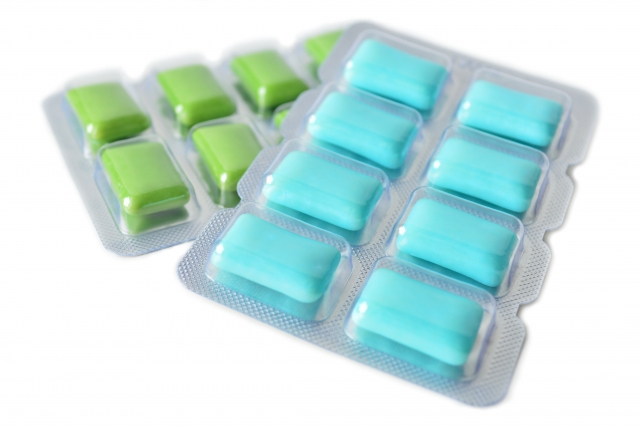Xylitol: The Biggest Game-Changer for Dental Hygiene
Over the years, many things have improved dental hygiene care: power scalers, air polishers, loupes, and lights. Of course, the O’Hehir curettes should also be counted.
But to me, xylitol is a bigger game-changer than all the other improvements. Xylitol will change our approach to prevention and our success.

Despite all the time we spend removing calculus and treating gingivitis and periodontitis, our primary focus has been prevention. It’s easy to lose that focus and instead spend more time scaling and root planing.
Traditional prevention includes brushing, flossing, and fluoride toothpaste, but if we look closely, it isn’t working very well. You may have a few kids in your practice who are caries-free, but by adulthood, nearly 100% have experienced dental disease. Traditional prevention just isn’t working. This is where xylitol becomes the game-changer.
Five exposures to xylitol each day will reduce plaque as effectively as toothbrushing. Xylitol is a “good sugar” that can significantly enhance the offerings of your dental hygiene department to prevent caries and improve oral health.
There are 915 research articles published about xylitol, but here in the U.S., we are just now beginning to include it in our preventive strategies. From the 1970s, there were two approaches to prevention: fluoride and nonfluoride. The U.S. focused on fluoride with water fluoridation, foams, gels, 5,000 ppm pastes, and eventually fluoride varnishes. While we focused solely on fluoride, the rest sought alternatives.
Xylitol was first reported in the 1960s to be beneficial for people with diabetes. In the 1970s, the first dental research demonstrated a 50% reduction in plaque levels by eating foods sweetened with xylitol. A 50% reduction in plaque levels is better than most people can achieve with a toothbrush! This was inspiring news among the research community.
Many studies were undertaken as these findings spread through the dental research community. At first, xylitol was used to replace all sugar in the diet, which resulted in a significant reduction in caries. After a two-year study, it was clear that replacing all sugar in the diet may be a difficult concept to sell to a population addicted to sugar. Instead, researchers delivered xylitol following meals and snacks in chewing gum. Using gum sweetened only with xylitol proved to be as beneficial as complete sugar replacement.
Following these early studies came hundreds of studies measuring the benefit of 100% xylitol-sweetened chewing gum in preventing tooth decay. In some countries, it’s hard to find chewing gum sweetened with sucrose today because xylitol-sweetened gums are so popular. This is not yet the case in North America.
What is xylitol?
Xylitol is a natural sugar; it is not an artificial sweetener. The human body makes 5–10 grams of xylitol each day in the metabolism of carbohydrates. Xylitol’s crystalline form looks and tastes like “table sugar,” but contains only 2.4 calories per serving, providing 40% fewer calories than other carbohydrates. With a glycemic index of 7, it’s safe for people with diabetes. Today’s most common source is from fibers in corn cobs and stalks. It’s digested as a fiber with no insulin released.

Warning: Keep xylitol away from pets
Never assume that what you eat is also safe for your pets. There are many foods dogs shouldn’t eat: chocolate, raisins and grapes … and xylitol. Undernourished dogs are the most likely to experience a severe reaction to xylitol. When they ingest xylitol, insulin is released, so table sugar is the best — and quickest — antidote for them. If you wait and take the dog to the vet, they will start a glucose IV. Therefore, your best bet is to keep xylitol out of your pet’s reach.
There are side effects in humans, usually caused by overingesting xylitol. A common mistake is eating too many chocolate chip cookies made with xylitol because they taste so good. If you eat too many of the baked goods you made using xylitol to replace sugar, too quickly, the results can include gas, bloating and diarrhea.
To avoid overingesting, replace sugar in your diet slowly over two weeks. This way, your digestion should adjust and you may minimize gastric upset. The toothpaste, mouth rinse, sprays, gels, gums and candies shouldn’t be a problem; the issues usually arise when replacing all sugar at once with xylitol.
Many chewing gums in the grocery stores contain a little xylitol and sorbitol, Sucralose, aspartame, Ace K, or mannitol. Artificial sweeteners added to chewing gum reduce the benefits of xylitol. To achieve results similar to those reported in the research, the only sweetener used should be xylitol. Besides chewing gum, many other proven delivery systems are available: candy, mints, toothpaste, mouth rinse, dry mouth spray, and oral gel.
How does xylitol work?
Xylitol prevents caries in several ways. First, it interferes with the bacteria’s ability to produce acid. Second, it blocks communication between bacteria, so they stop producing the polysaccharide slime that holds the biofilm together. Third, it raises the pH of the mouth. Cariogenic bacteria prefer living in a low-pH environment and produce the acid that demineralizes enamel. In the presence of xylitol, the bacteria stop producing acid and the polysaccharide slime that holds the biofilm together, and slide off the teeth. In the presence of sugar, bacteria thrive, produce acid, and stick to the teeth. Bacterial numbers are significantly reduced in the presence of xylitol. Xylitol promotes an alkaline oral environment, which is conducive to oral health.
Sucrose forms complexes with calcium that allow precipitation of calcium out of saliva, while xylitol forms complexes with calcium that do not produce acid and maintain a supersaturated calcium level in saliva, which is essential for enamel remineralization. This is critical when teeth first erupt and are not completely mineralized. The ability of xylitol to maintain high salivary calcium levels as teeth erupt enhances the final mineralization of these teeth. The ability of xylitol to bind with calcium is also evident in higher calcium levels measured in plaque when xylitol is present.

Xylitol research
Chewing gum comparisons showed that 100% xylitol-sweetened chewing gum reduced plaque accumulation significantly better than 100% sorbitol-sweetened gum and better than a gum sweetened with both xylitol and sorbitol. Bacteria can metabolize sorbitol to produce acid; therefore, adding sorbitol to chewing gum sweetened with xylitol will significantly reduce the benefits of xylitol. A three-year study in Hungary among nearly 700 students showed that xylitol-sweetened candy eaten several times daily reduced caries incidence better than fluoridated toothpaste or fluoride in milk.
The classic long-term study was conducted by the University of Michigan in Belize. This 40-month study, conducted in the early 1990s, included nearly 1,300 students. Different chewing gums were tested, with the 100% xylitol-sweetened gum providing the most significant reduction in tooth decay, at 73%. Numerous published studies report caries reductions from 21% to 85%, presenting a significant gap between reports. Differences in study outcomes are attributed to many aspects of the study design. Subjects with low caries experience will not demonstrate a significant difference. A small study with insufficient subjects will fail to show a difference. Studies using a concentration that is too low, too short an exposure to xylitol, or too few exposures each day will not show significant results. The recommended dose is 6–7 grams of xylitol daily, separated into three to five exposures. The gum is chewed for only five minutes to release the xylitol.
A recent Cochrane Review in the Journal of the American Dental Association suggested less exciting results. Of the 915 research articles on xylitol, the review included only 10 studies. These systematic reviews require that all studies be randomized, double-blind, and placebo-controlled. Based on those criteria, chewing gum studies will never qualify because subjects are unwilling to chew a flavorless gum base five times a day for three years. Even still, the review of 10 papers showed that adding xylitol to fluoride toothpaste resulted in 13% better caries prevention than fluoride toothpaste alone.
I hope you’ll agree that xylitol is the biggest game-changer in dental hygiene. Xylitol will change our approach to prevention and our success!
[Spear members can watch Trisha O’Hehir’s video course that further shows xylitol’s use in dental hygiene.]
SPEAR ONLINE
Team Training to Empower Every Role
Spear Online encourages team alignment with role-specific CE video lessons and other resources that enable office managers, assistants and everyone in your practice to understand how they contribute to better patient care.

By: Abigail Pfeiffer
Date: January 19, 2017
Featured Digest articles
Insights and advice from Spear Faculty and industry experts


